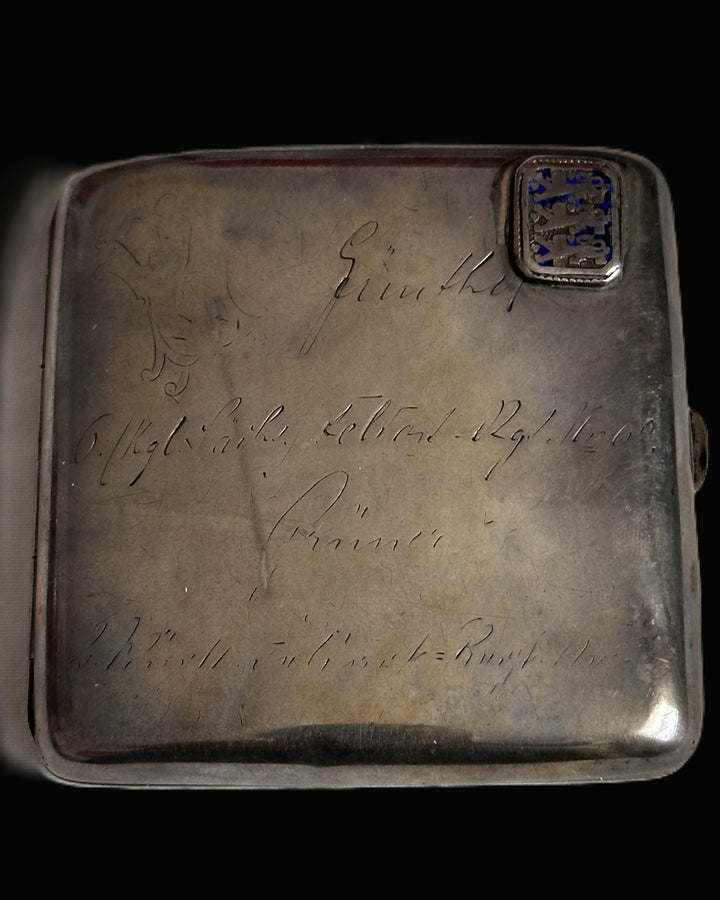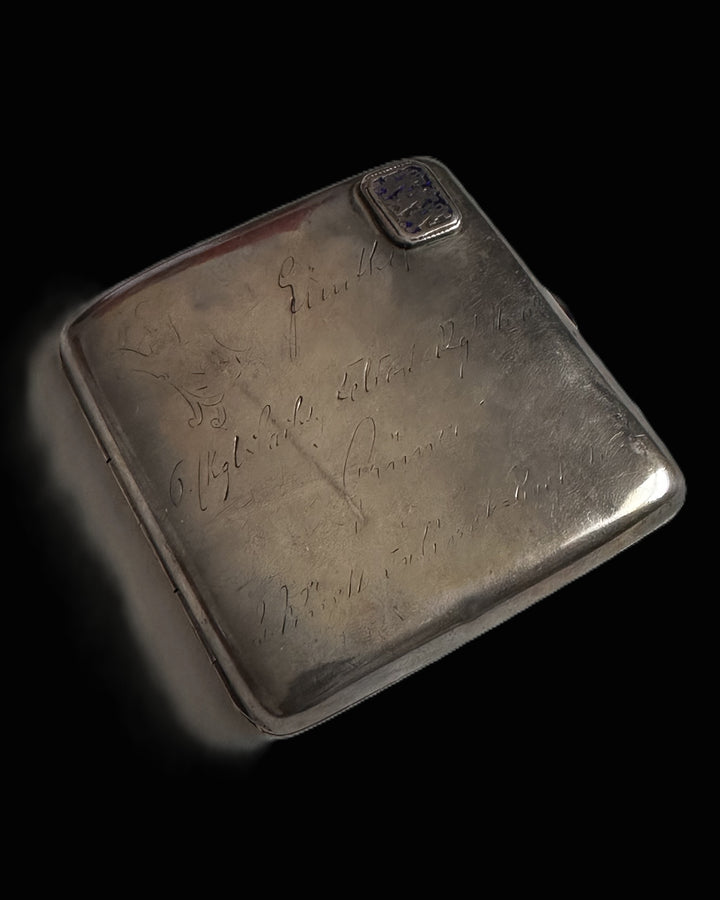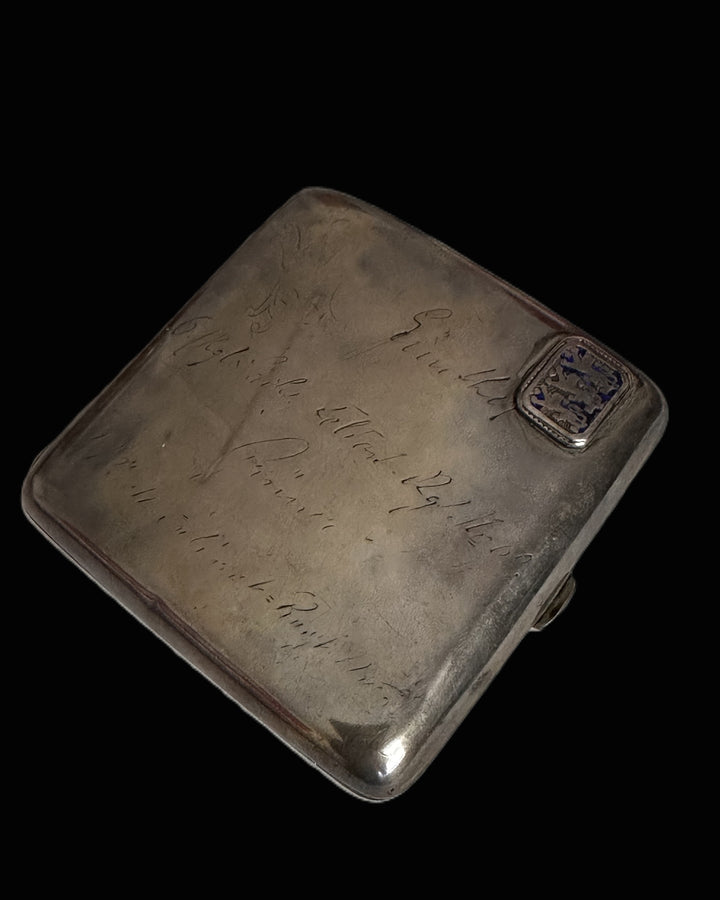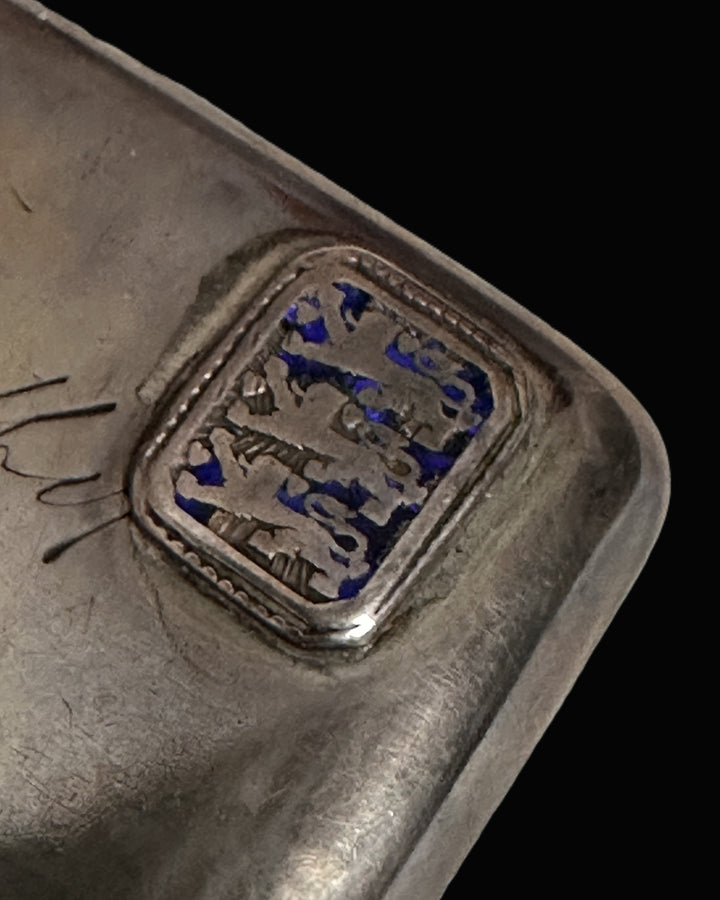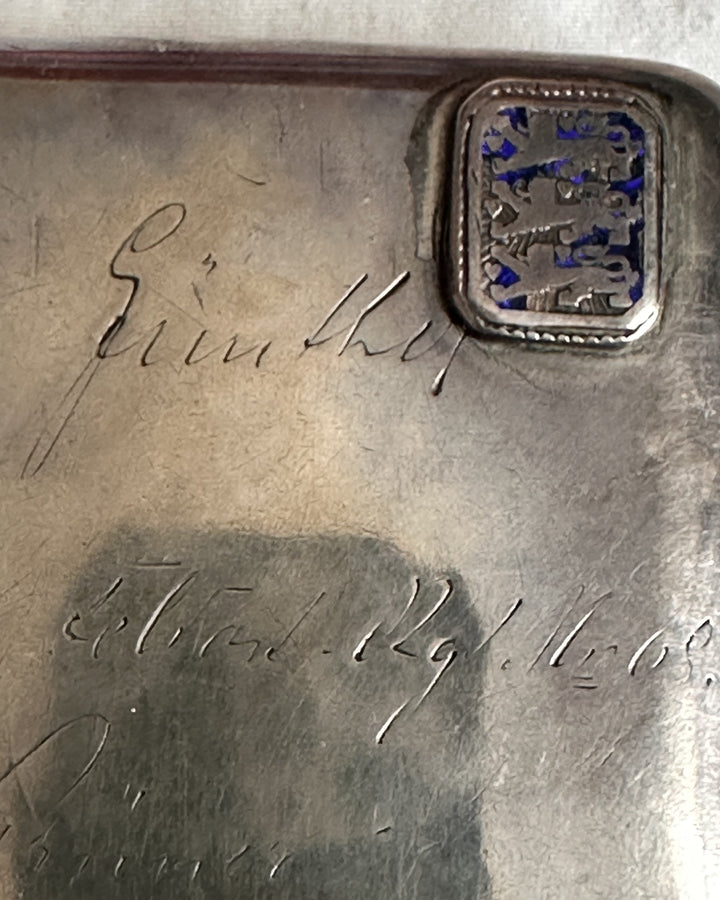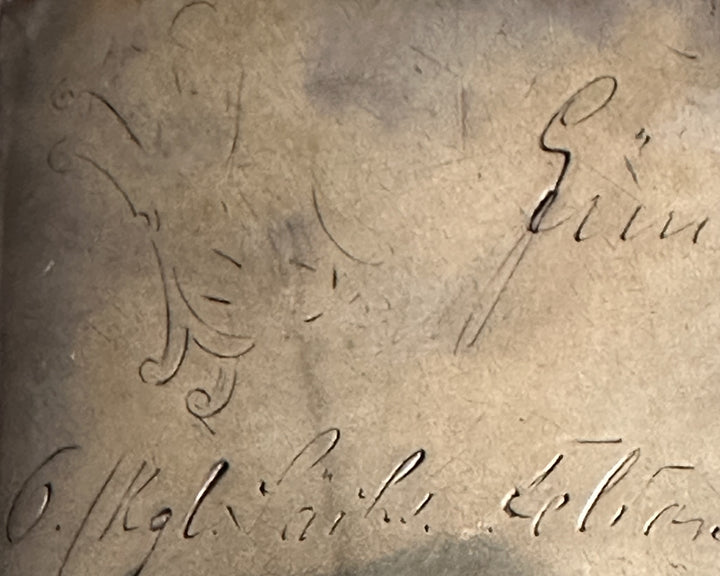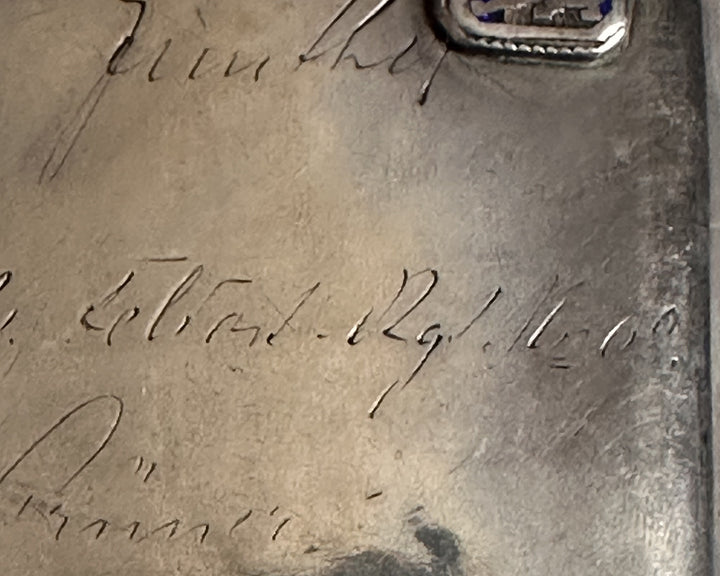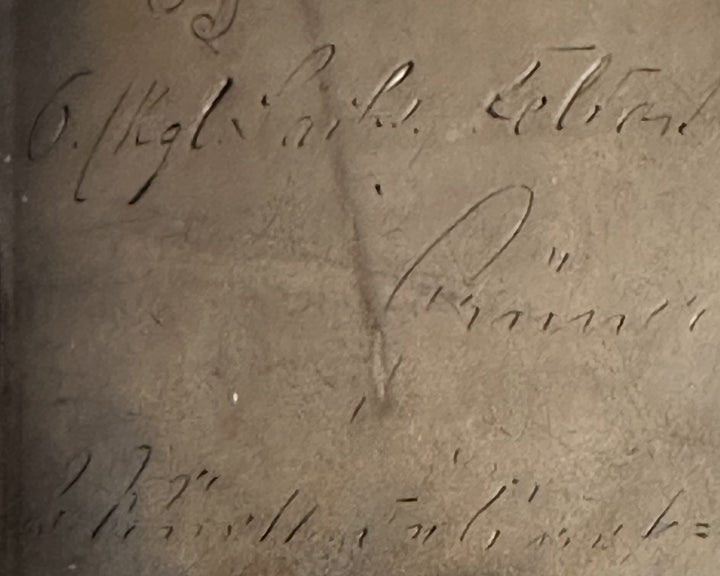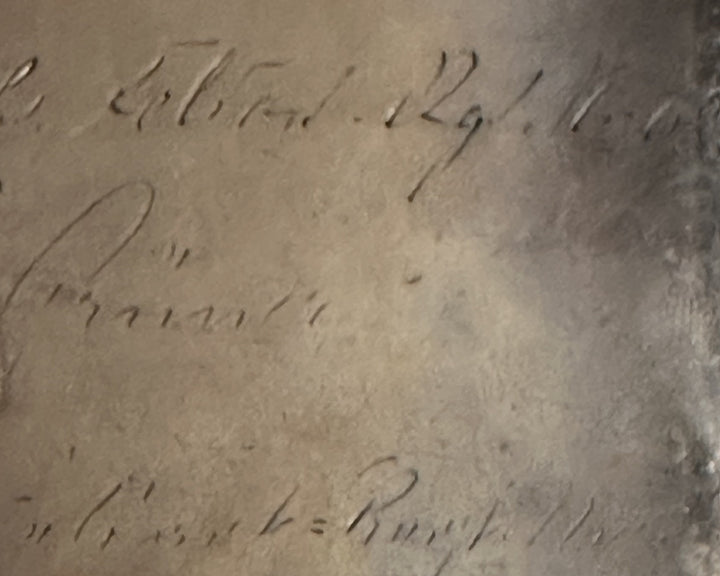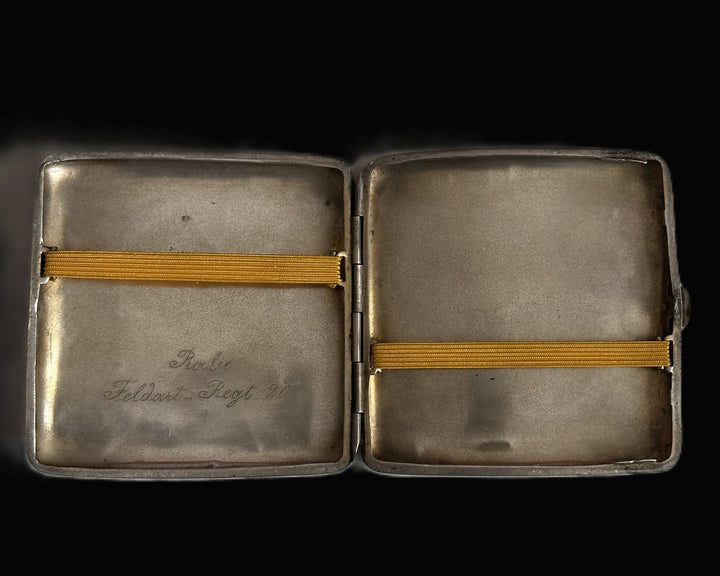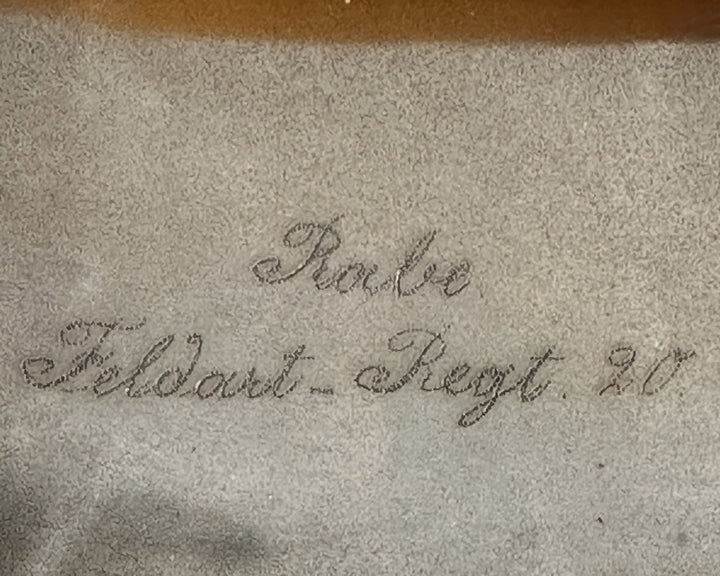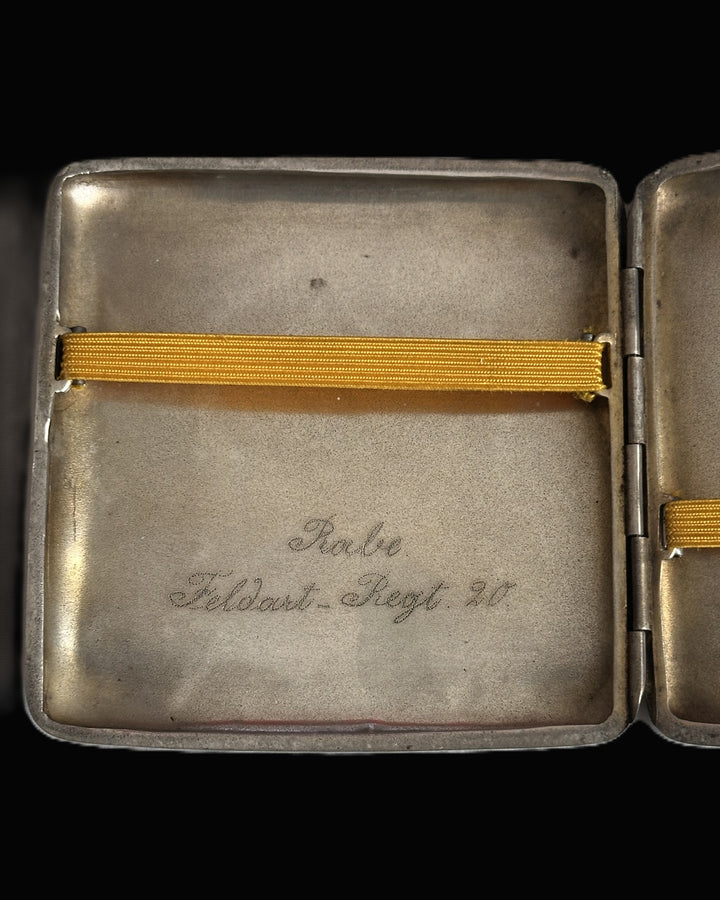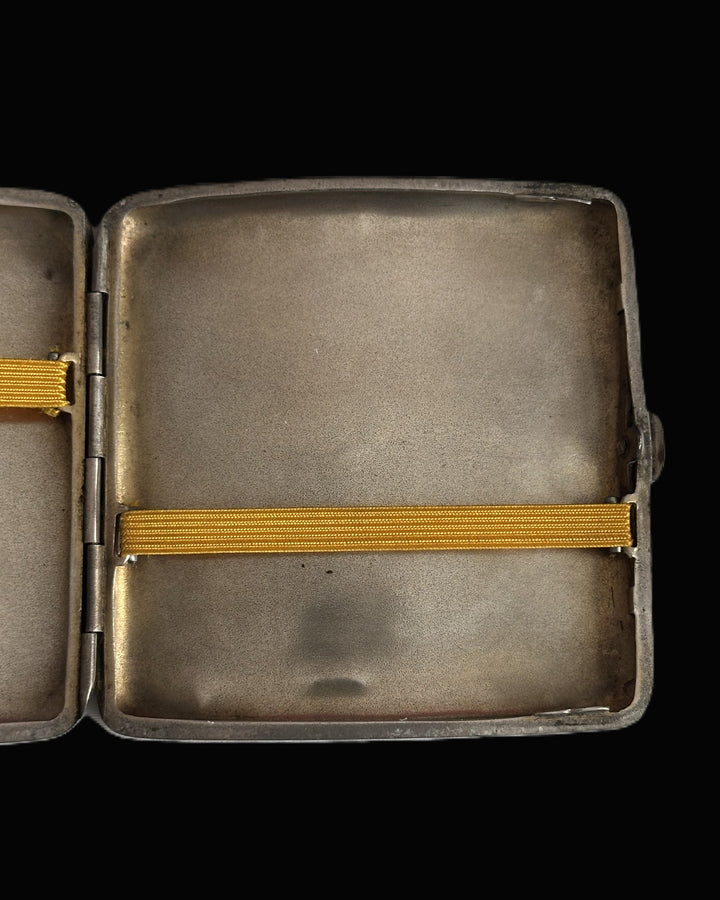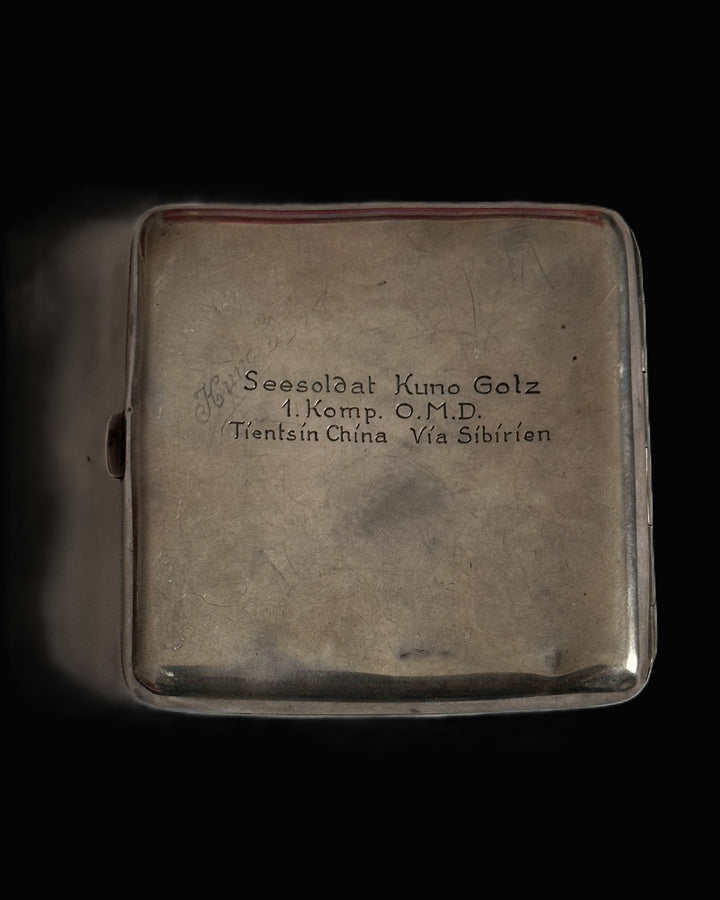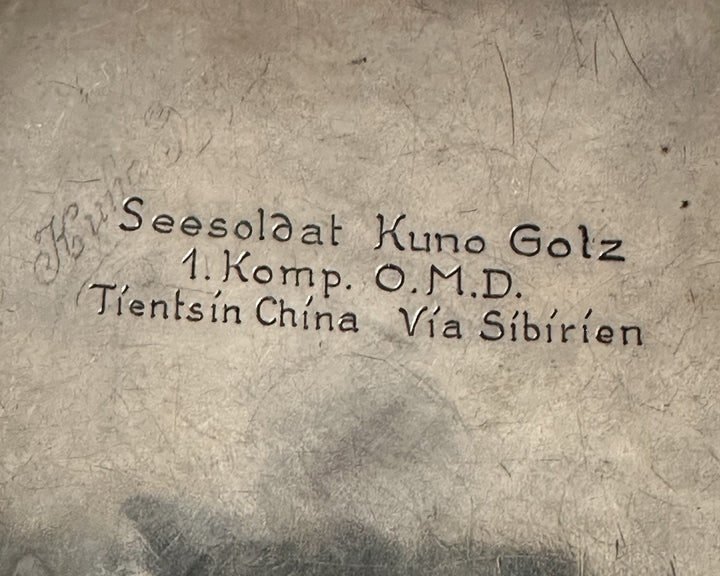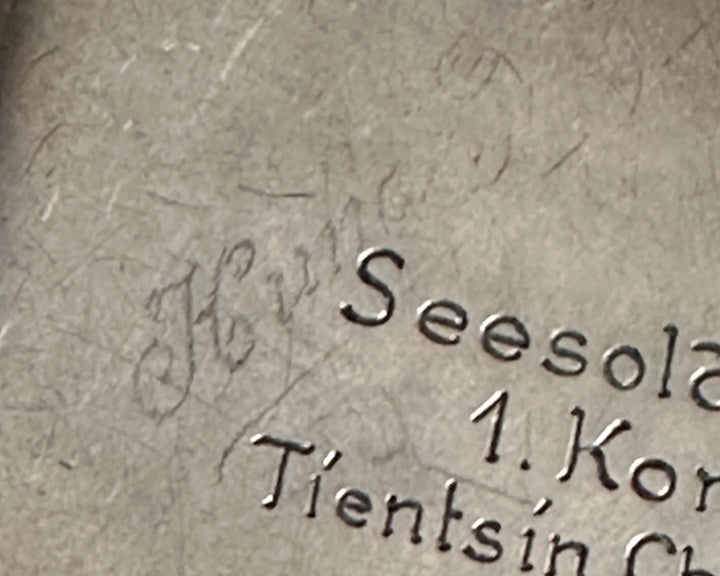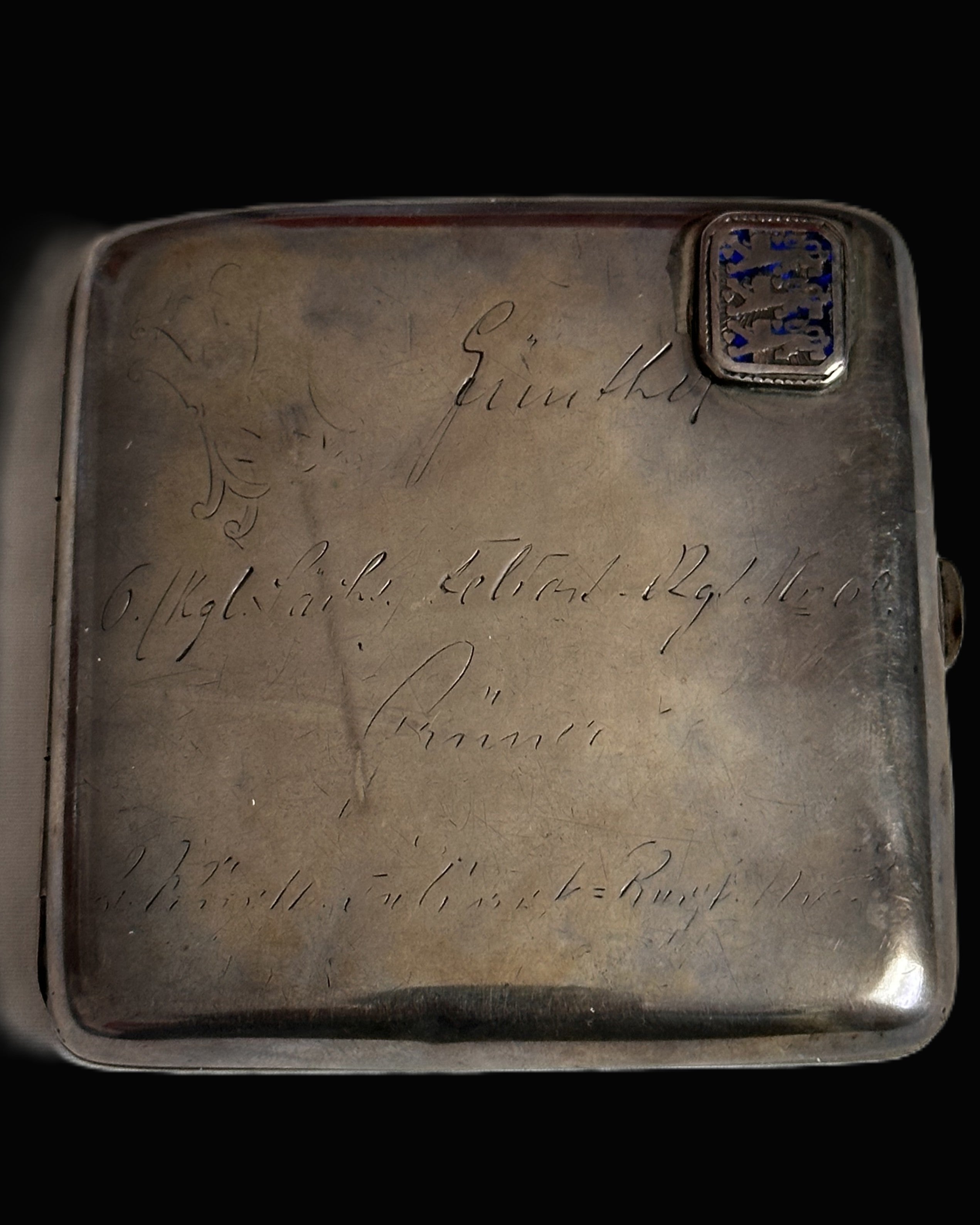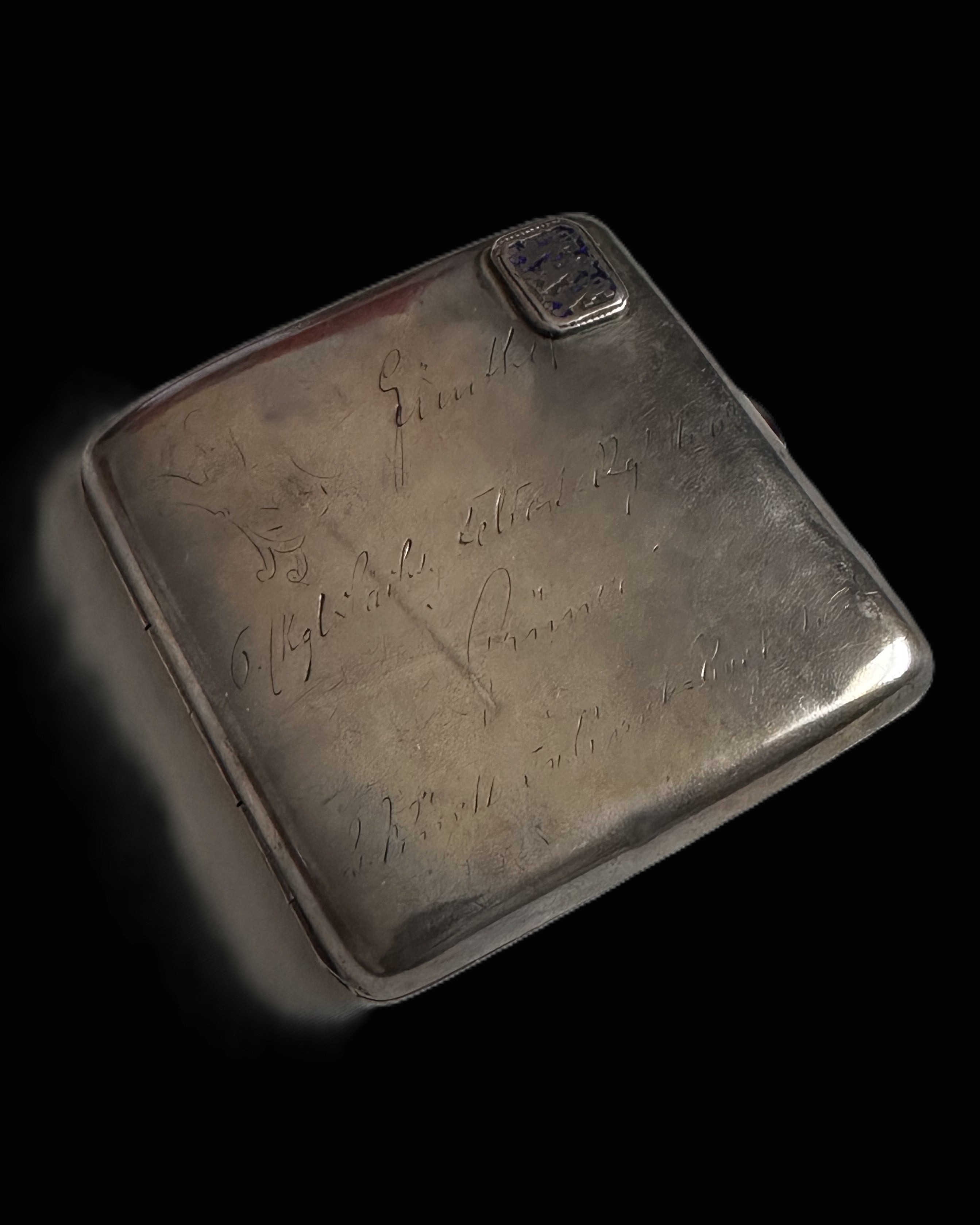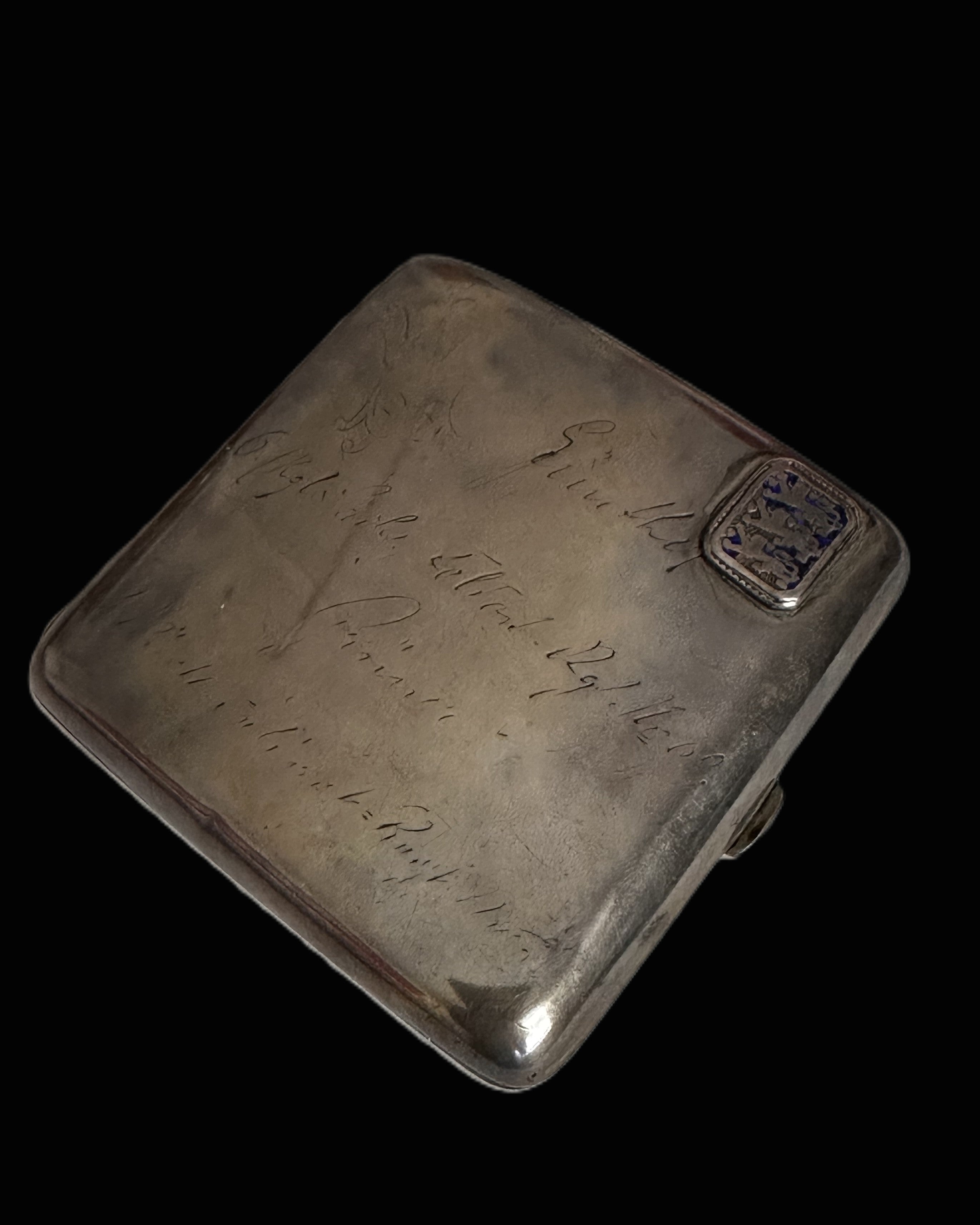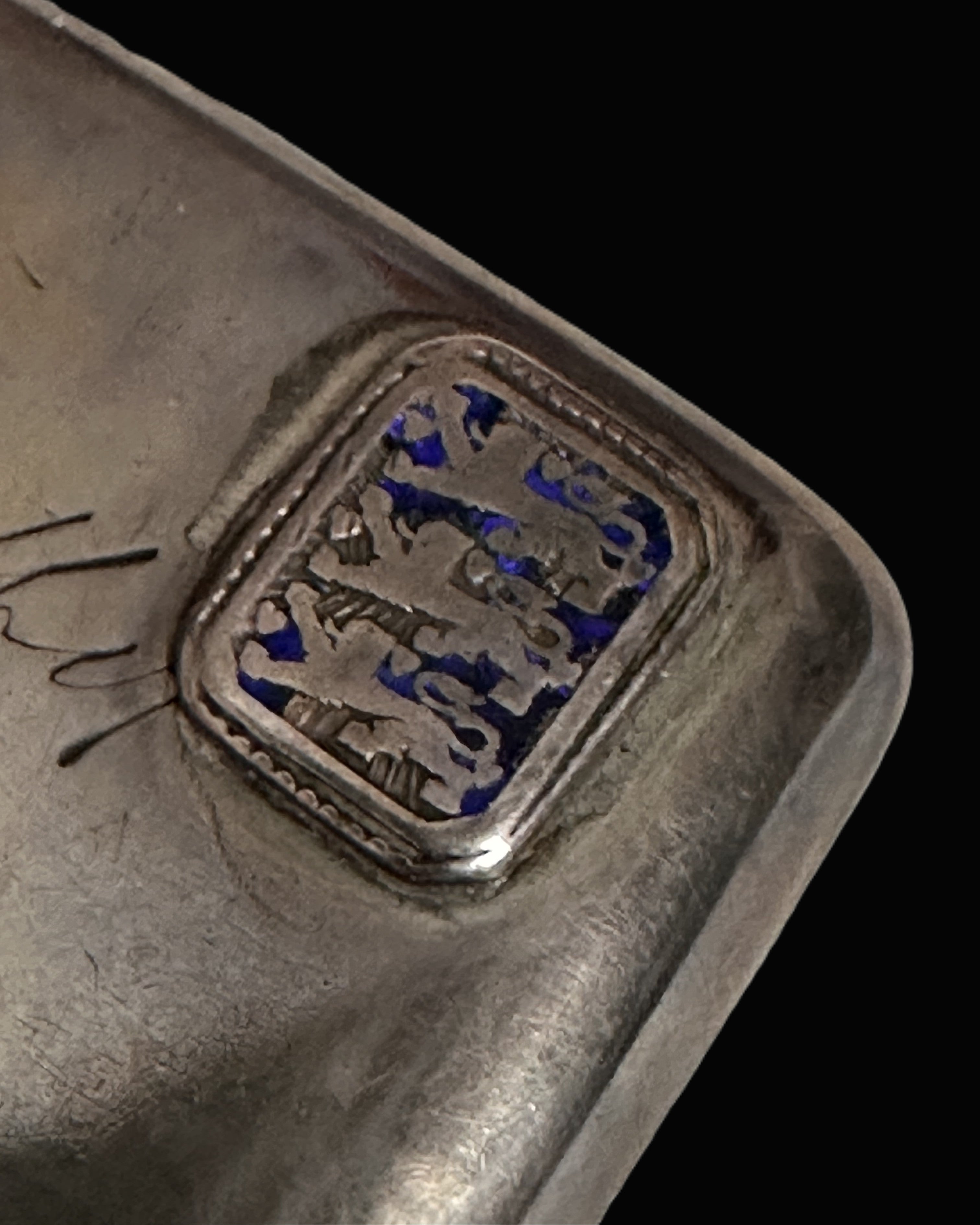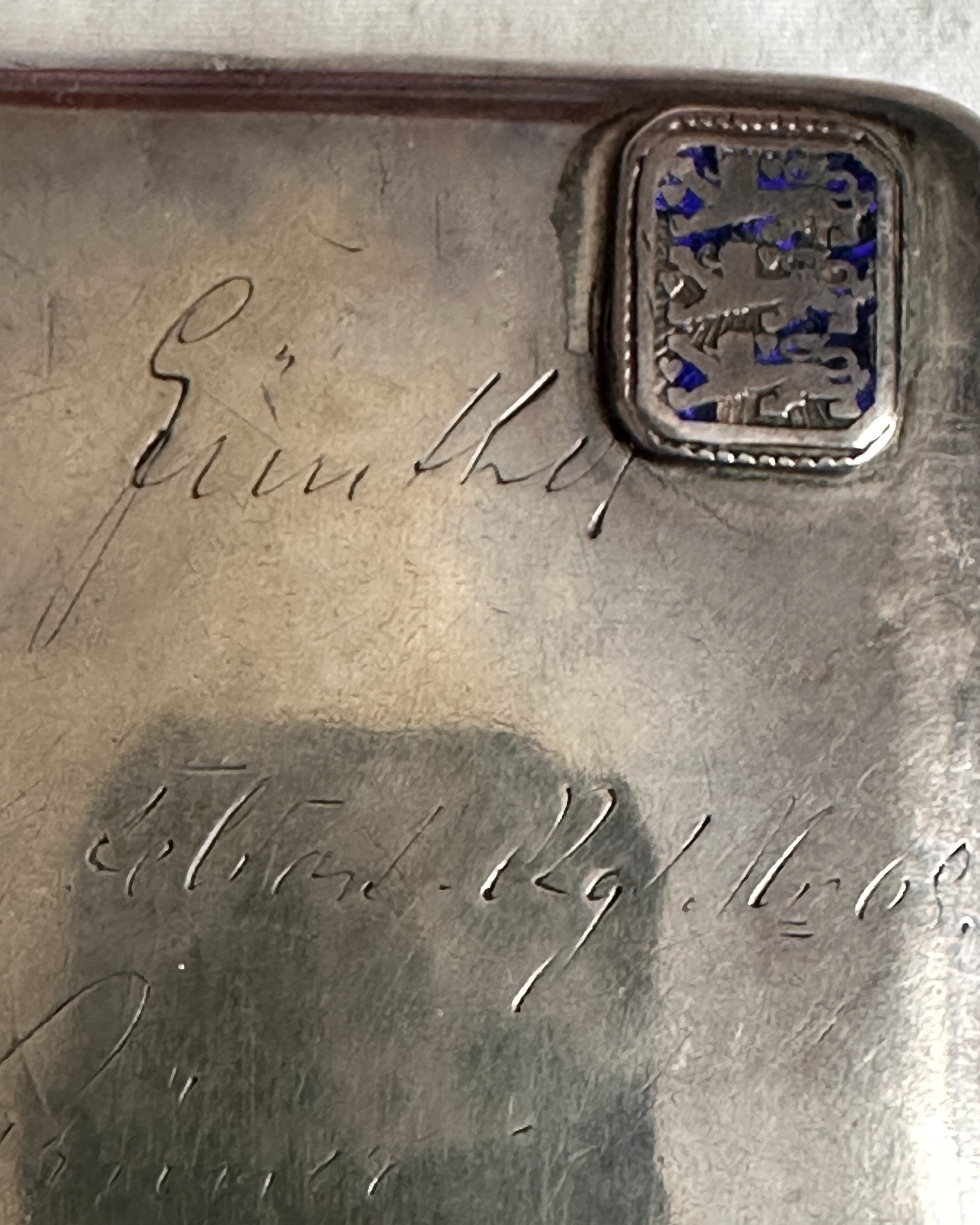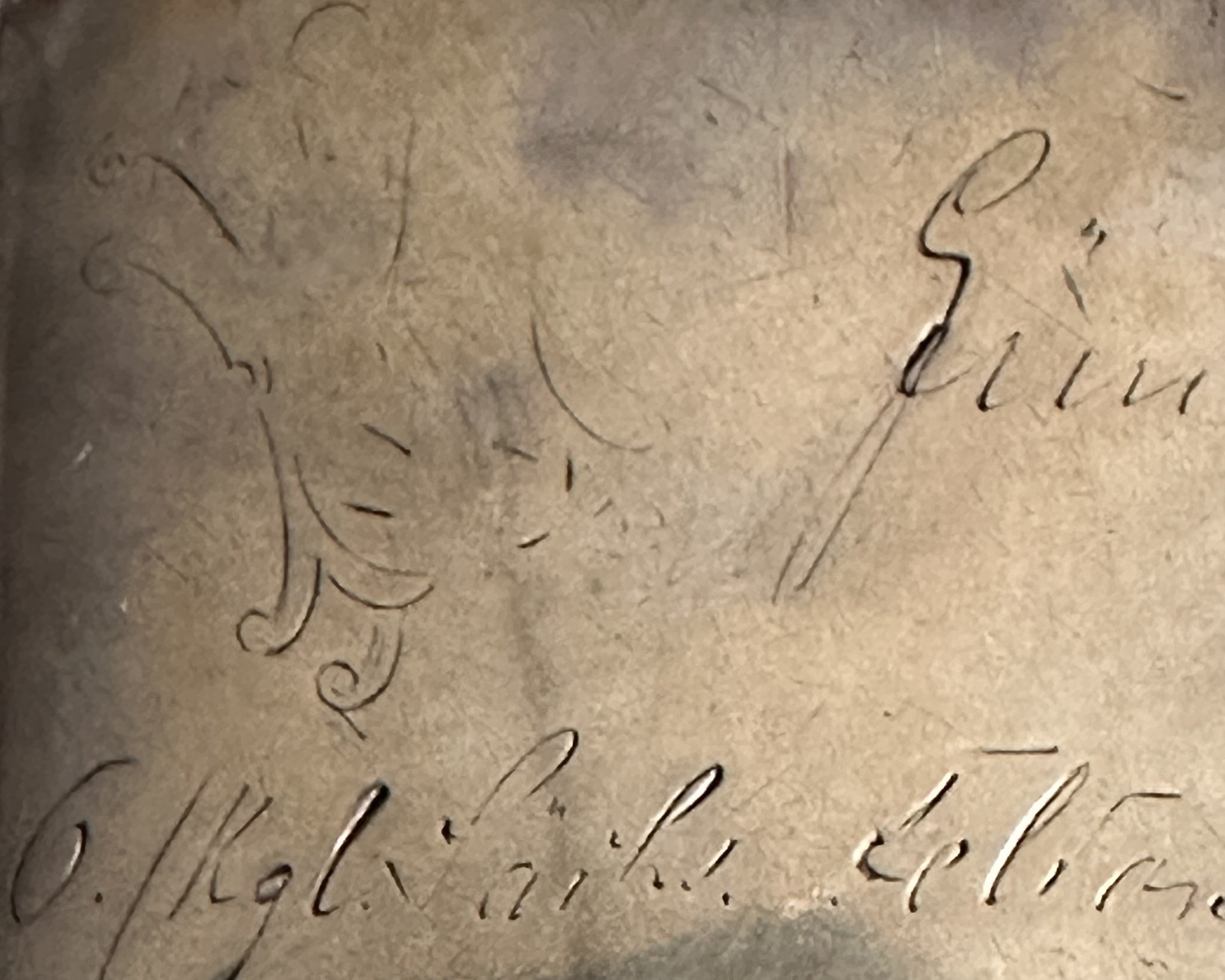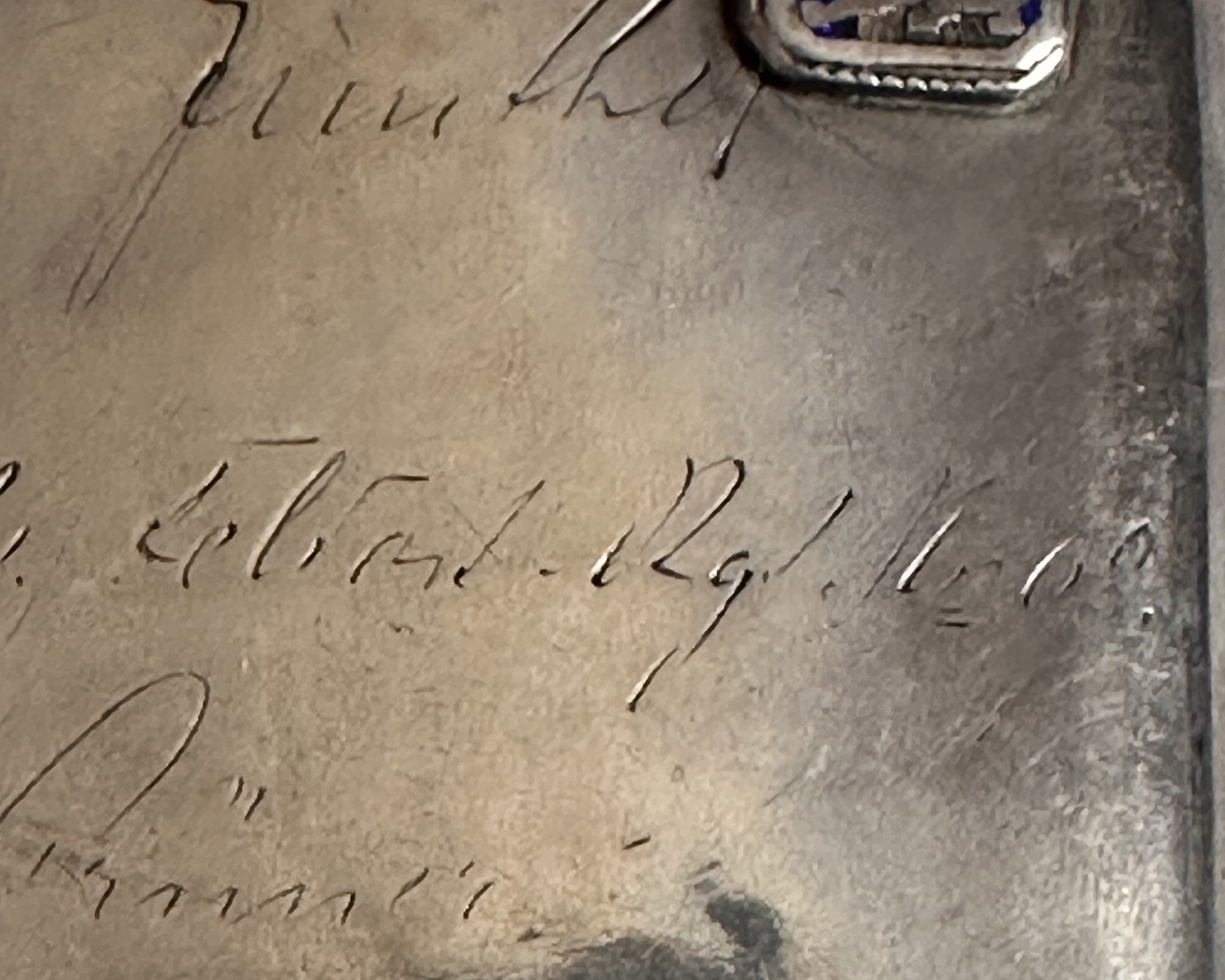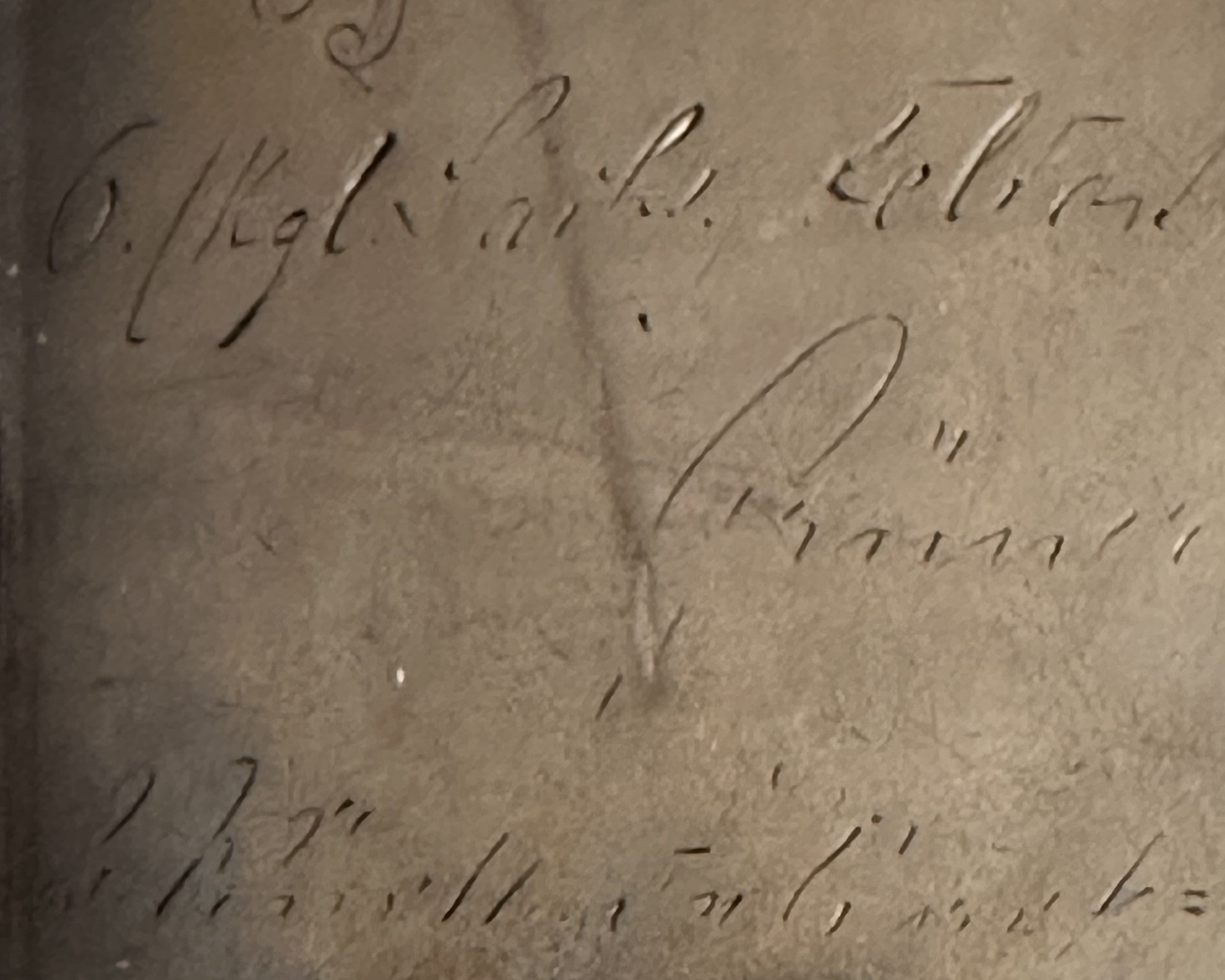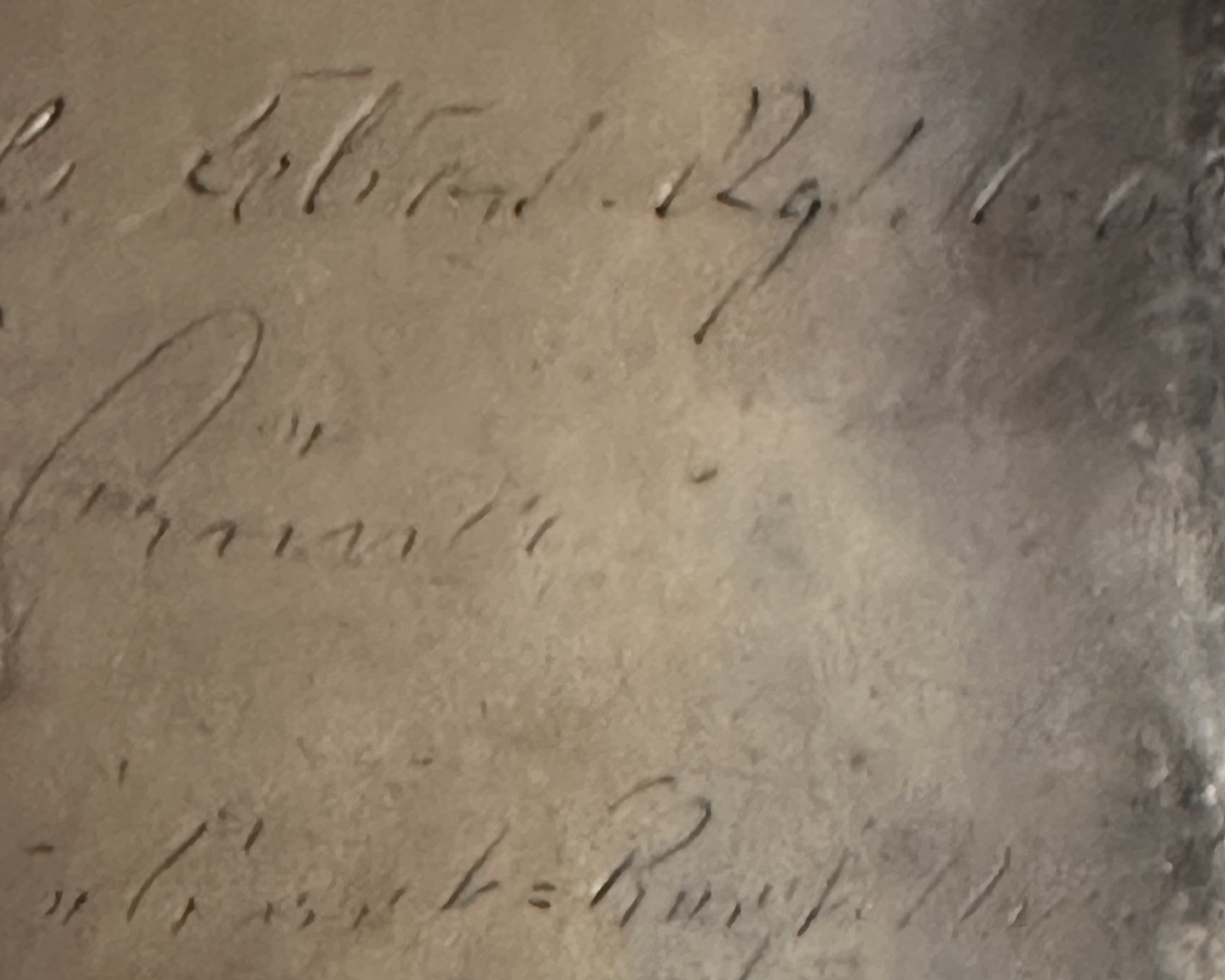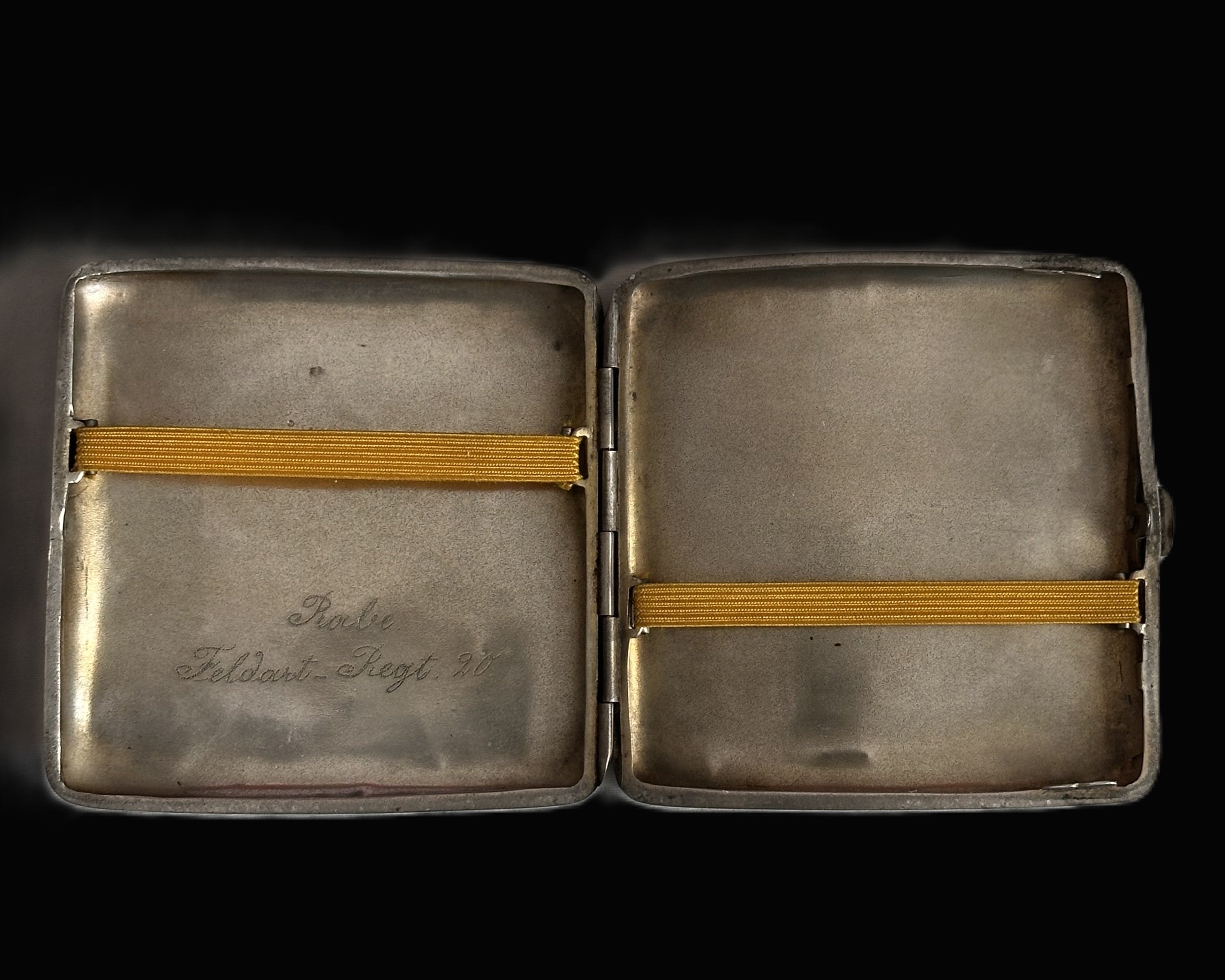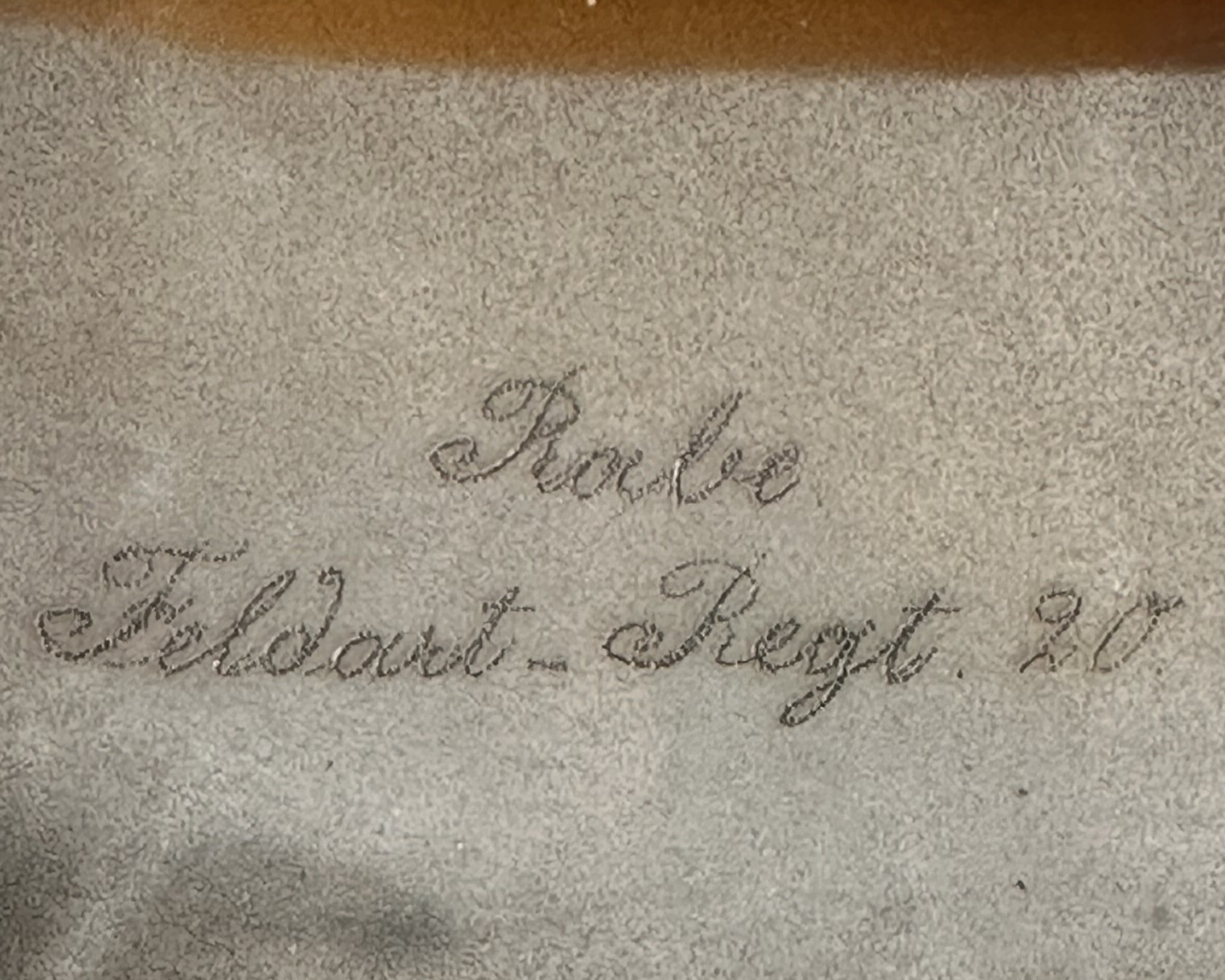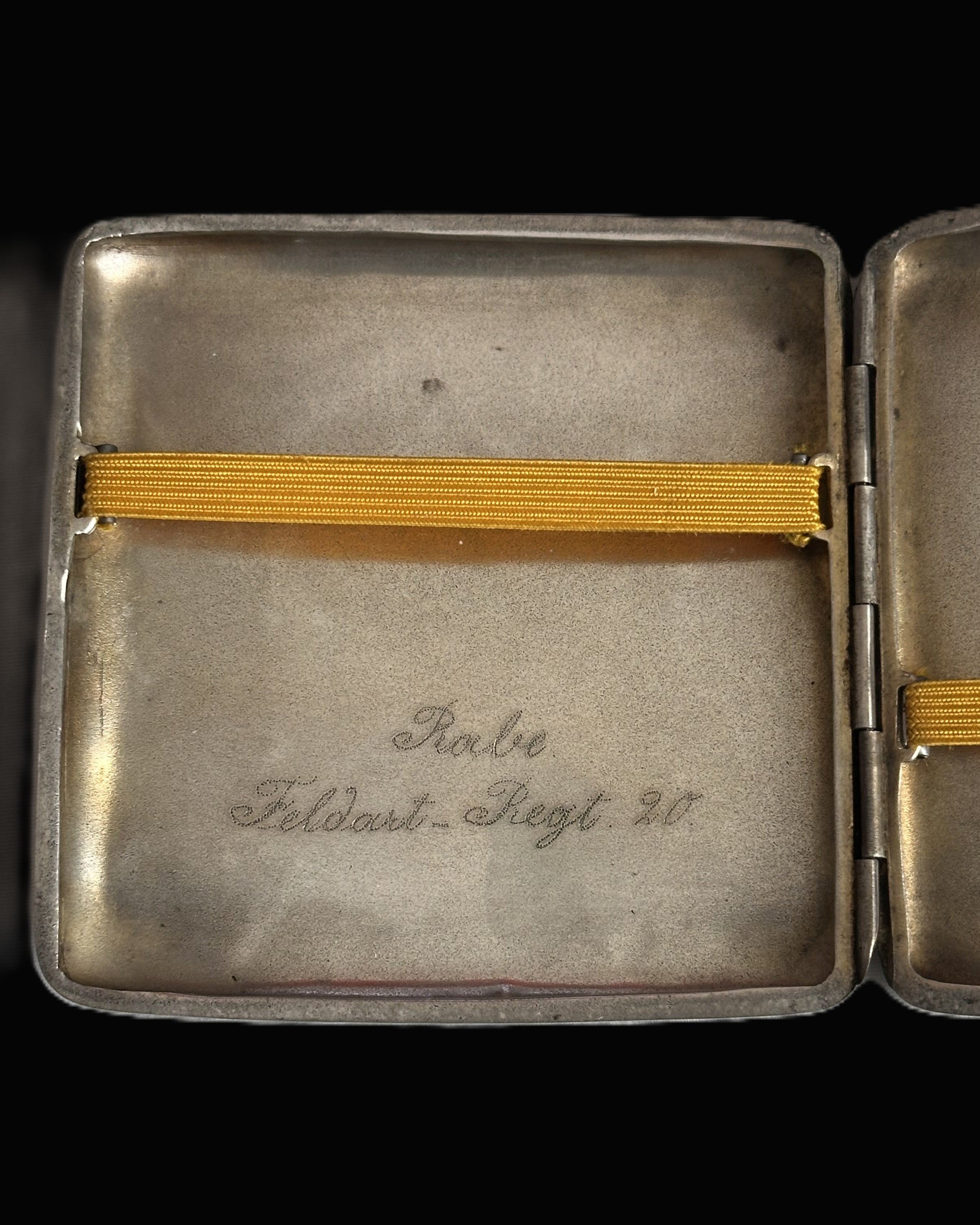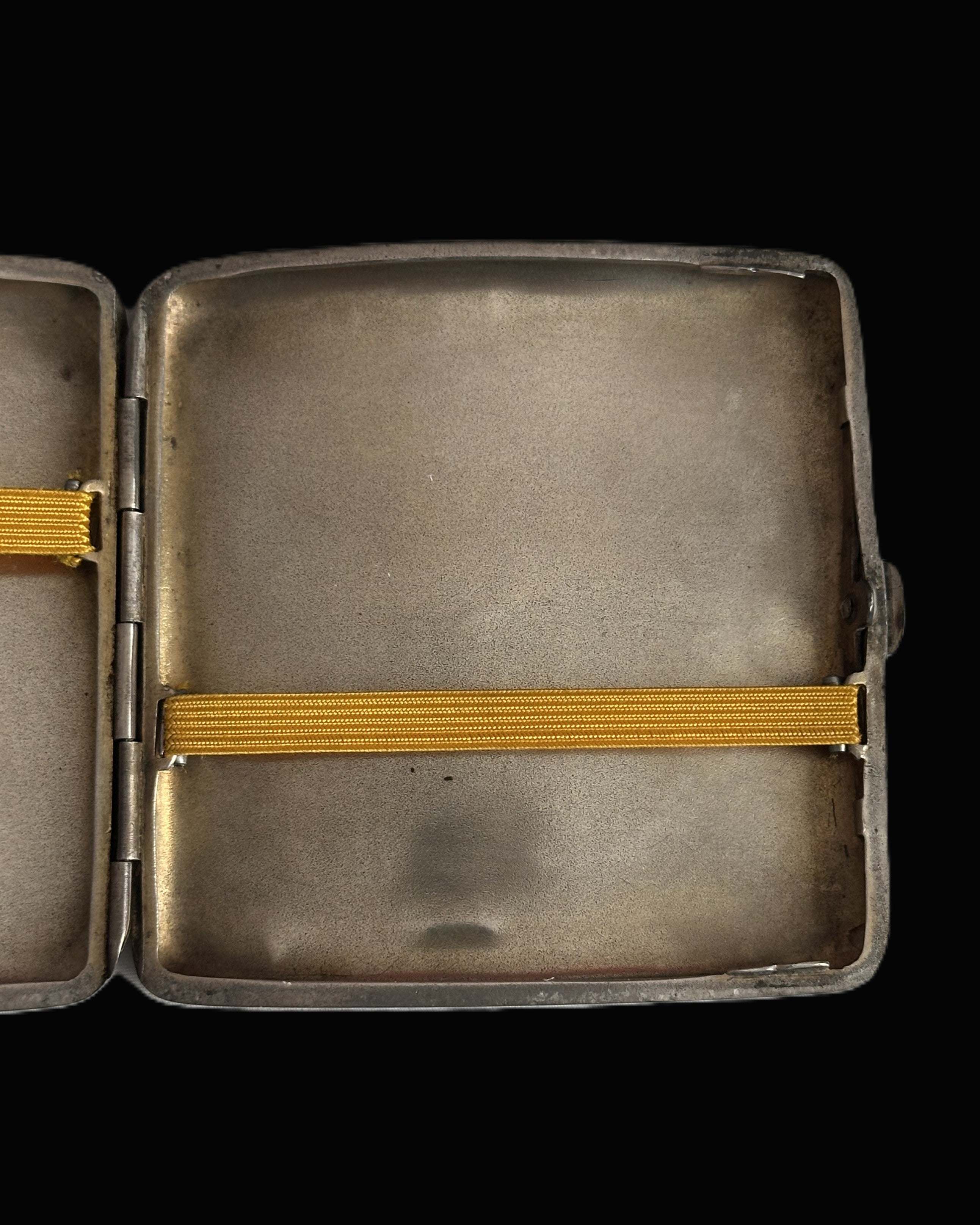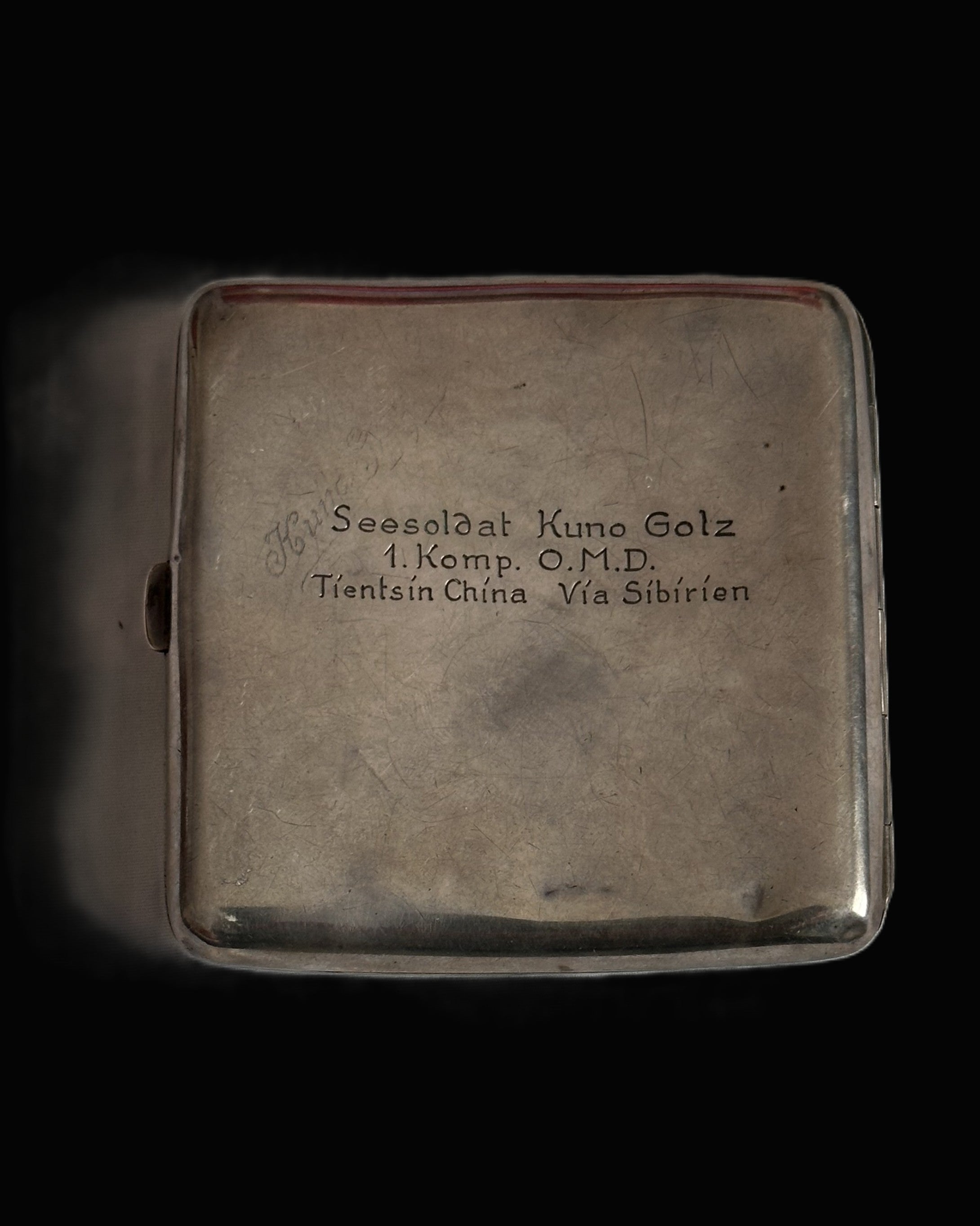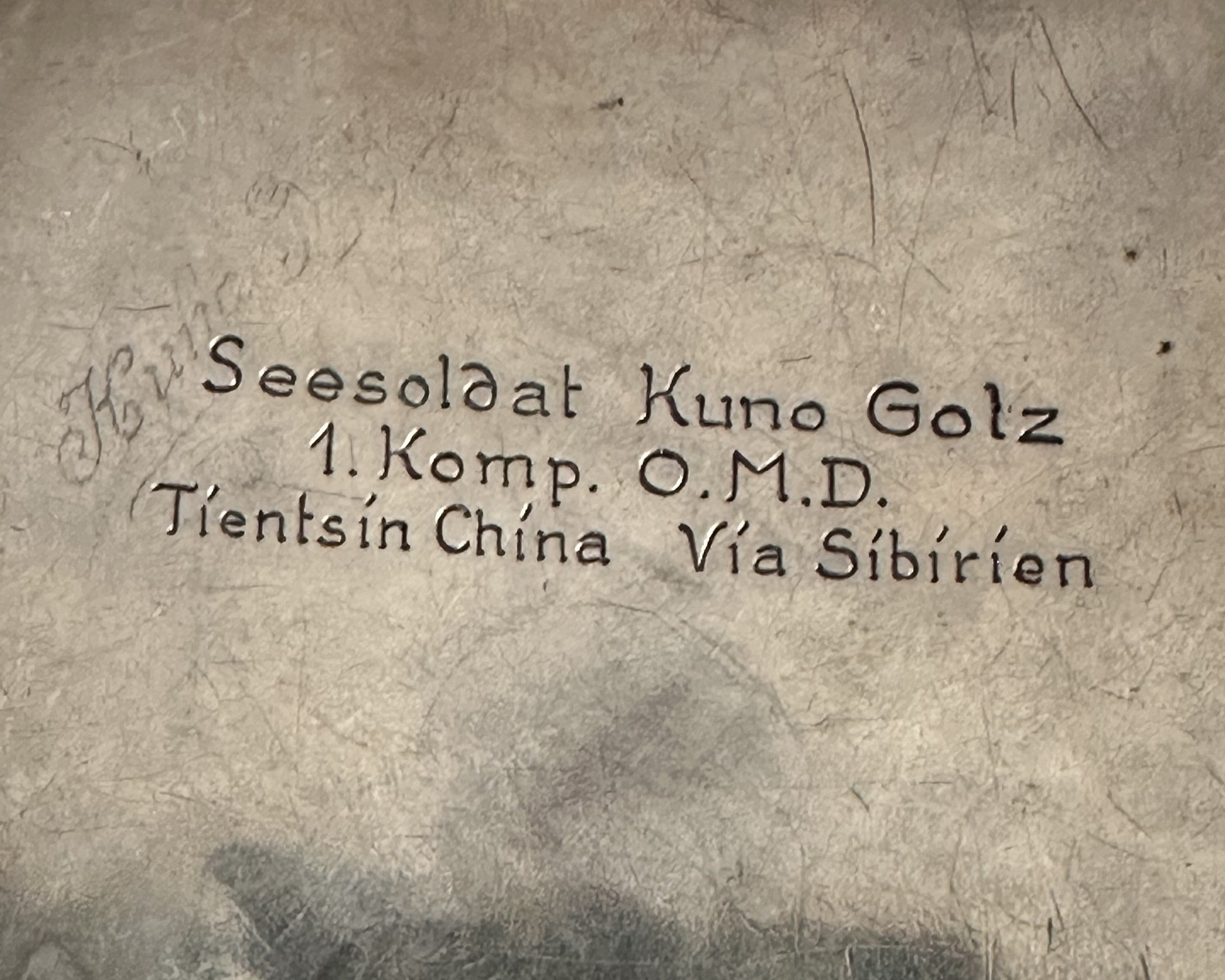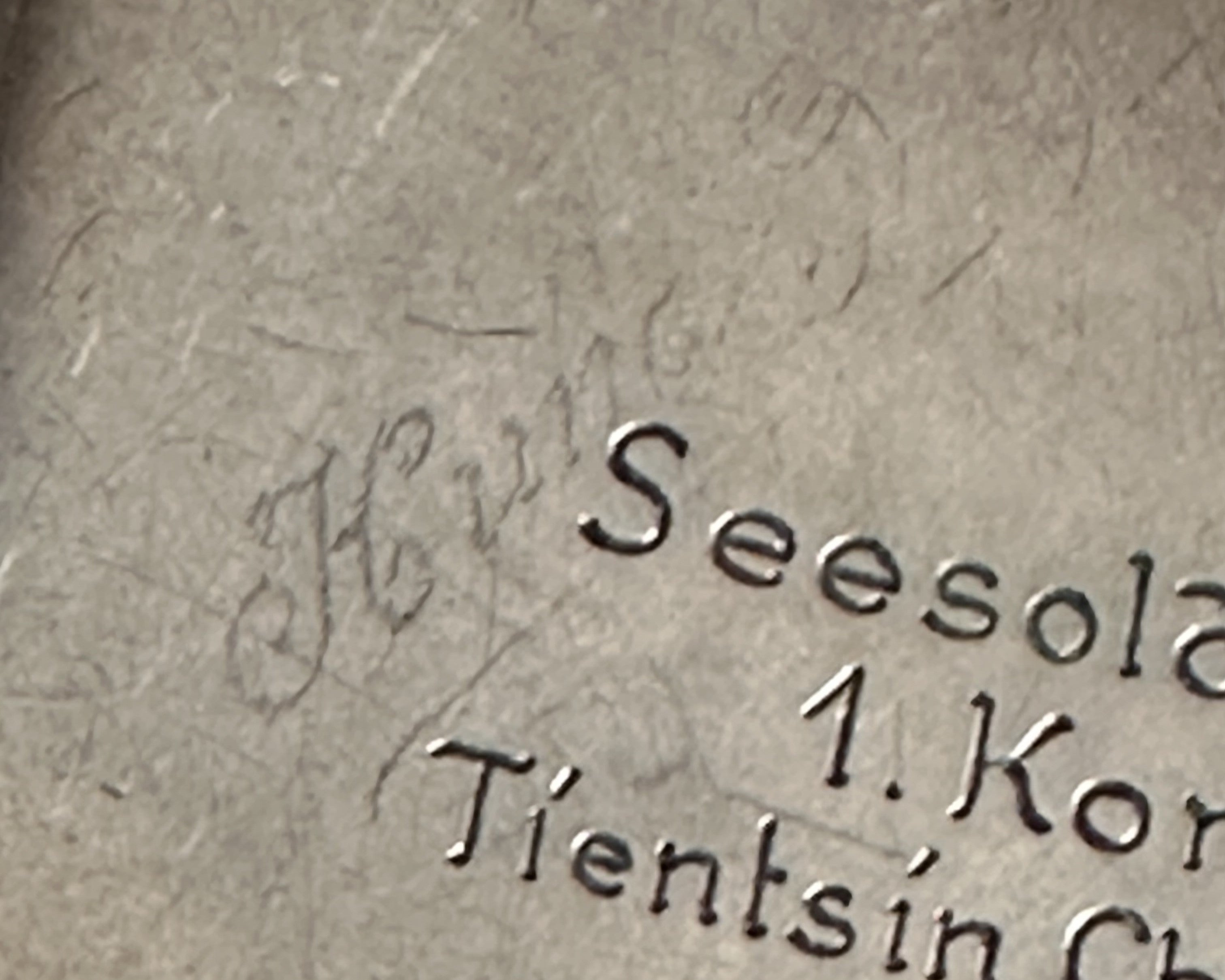Imperial German Silver Cigarette Case – Saxon Artillery & East Asia Marine
- Regular price
- $697.00
- Sale price
- $697.00
- Regular price
SKU: 03-12
A remarkable and historically layered Imperial German silver cigarette case connecting the Royal Saxon Field Artillery, the Prussian artillery arm, and Germany’s colonial forces in China.
The obverse bears an elegant hand engraving:
“Erinnerung / 6. Kgl. Sächs. Feldart. Regt. Nr. 68 / Prinzen d. Kgl. Sächs. Husaren-Regt. No. 19,” beneath a lightly engraved Saxon lion and an inlaid blue-and-silver enamel badge showing the crowned Saxon arms.
Inside, the left panel is inscribed:
“Rabe / Feldart. Regt. 20.”
This identifies a later Prussian artillery owner, suggesting the case was passed between comrades or regiments.
The reverse carries a bold machine engraving reading:
“Seesoldat Kuno Golz / 1. Komp. O.M.D. / Tientsin China Via Sibirien.”
Golz served in the 1st Company of the Ostasiatisches Marine-Detachement, the German naval infantry contingent garrisoned at Tientsin following the Boxer Rebellion. His engraved route “Via Siberia” marks his return through the Russian rail corridor — a fascinating detail unique to veterans of the China Expedition.
Complete and fully functional, this case retains its gilt interior and both elastic retainers. The hinge and clasp work smoothly, and the metal shows only light age patina.
An exceptional cross-branch souvenir uniting the Saxon artillery tradition with the Imperial Navy’s colonial expeditionary service, and bearing personal inscriptions from three distinct regimental contexts — a rarity in German militaria.
The 6th Royal Saxon Field Artillery Regiment No. 68 (6. Königlich Sächsisches Feldartillerie-Regiment Nr. 68) was raised in 1899 and garrisoned at Riesa and Dresden within the Kingdom of Saxony, one of the semi-autonomous states of the German Empire. It formed part of the XII (Saxon) Army Corps under the command of the Saxon War Ministry in Dresden. Like other Saxon artillery units, the regiment bore distinctive silver and green colors and maintained close ceremonial ties to the royal court. The inscription referencing the Royal Saxon Hussar Regiment No. 19 “Prinz Albert” reflects this tradition of inter-regimental camaraderie. The 19th Hussars, an elite light-cavalry regiment founded in 1867, served the Crown of Saxony with a distinguished record through the Great War and were famed for their black-and-yellow Attila tunics and fur busbies.
Feldartillerie-Regiment Nr. 20, meanwhile, was a Prussian formation stationed in East Prussia before the First World War. Transfers between Saxon and Prussian artillery units were not uncommon, especially after the 1914 mobilization when batteries were reorganized under the larger Imperial command structure.
The final inscription connects the case to Germany’s Ostasiatisches Marine-Detachement (East Asia Marine Detachment), established after the 1900 Boxer Rebellion to protect Germany’s concessions in Tientsin (Tianjin) and Qingdao (Tsingtau). These naval infantry units—drawn largely from Marine Infantry Regiments and volunteers from coastal artillery and fleet formations—were among the Empire’s most prestigious overseas postings. Life in Tientsin combined garrison duty, ceremonial representation, and occasional expeditionary service. Veterans returning “via Siberia” traveled home across the Trans-Siberian Railway, a journey of several weeks that only a handful of troops experienced before maritime routes became standard.
Taken together, the engravings on this case document a soldier’s passage from the royal artillery of Saxony, through Prussian service, to colonial deployment in China—a remarkable microcosm of Imperial Germany’s reach at the turn of the century.
